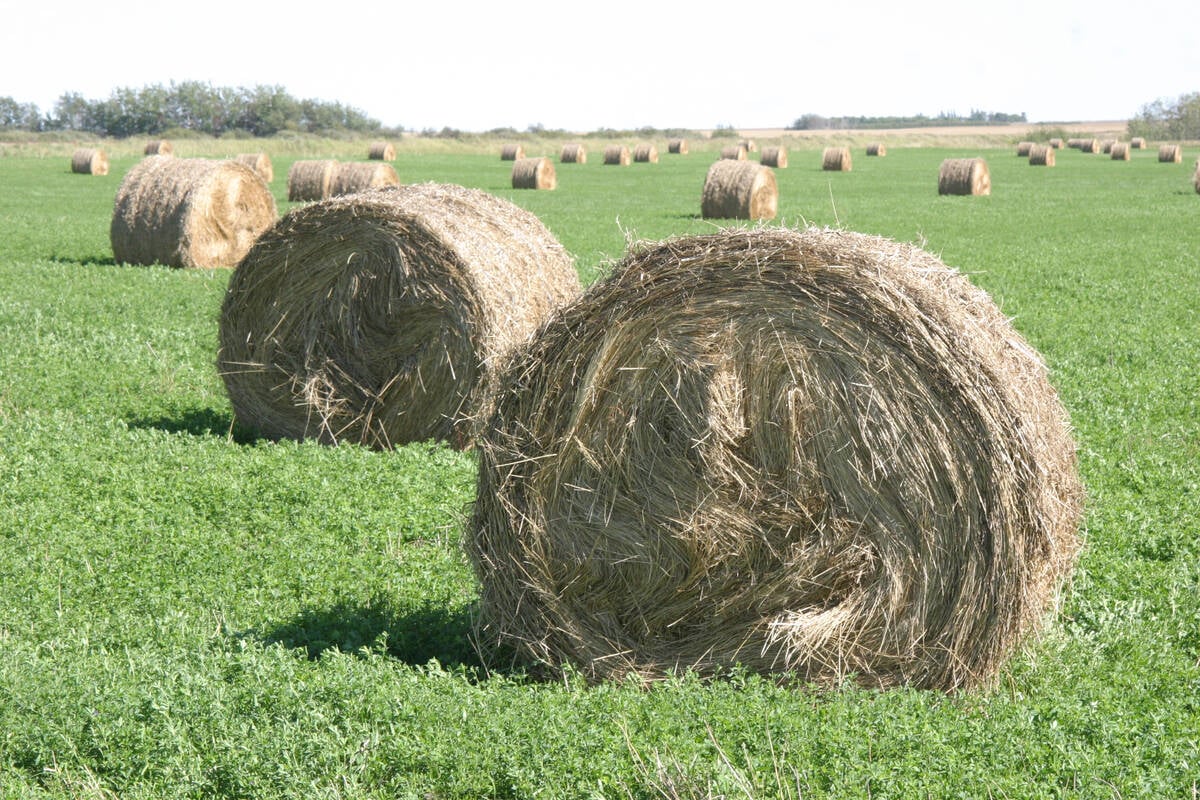KAMLOOPS, B.C. – Learning to think like a cow may be the best advice cowboys can get.
Animal behaviorist Temple Grandin, of Colorado State University, has devoted her life to understanding how cattle view the world. Most of her knowledge is based on studying how animals’ instincts for self preservation trigger predictable behavior.
Her instructions during an animal handling session at the British Columbia Cattlemen’s Association meeting May 28-29 were basic. Be calm, clean work areas and get rid of the electric prods, and livestock should start to co-operate in the pasture or in the chute.
Read Also

Breaking down successful winter feeding into six steps
It’s that time of year when it is important to start planning for a cow herd’s winter feeding program. Here are six steps I think are necessary to consider when getting your feed tested.
Besides understanding the mind of a steer, handlers have to debug facilities because animals balk at innocuous things.
“You have to get down in the chute and see what the animals are seeing,” said Grandin.
Garbage like a discarded coffee cup, paper, or plastic left lying around in handling areas can distract cattle and often prompt them to flee.
“Little things that look like they shouldn’t be there, that move slightly, are the kinds of things out in the wild that might be associated with a predator,” she said.
Cattle are easily upset and new situations can be the most frightening.
They don’t want to walk into a dark entrance. It’s a black hole to them and they can’t tell where they are heading. When they enter a chute they need to see a light at the end and if they see a group of cattle on the other side they will try to lunge through.
They don’t like moving reflections such as shiny metal or water puddles.
Gates that rattle and jiggle are scary. High-pitched noises are distracting as well.
“We’ve got to work on getting rid of the high-pitched noise that’s coming out of people’s mouths. That gets cattle all excited,” she said.
Grandin recommends translucent sky lights or windows in barns. Transparent windows can cause shadows.
Since cattle feel safer when there is a barrier between themselves and people, she suggested putting a piece of cardboard on the sides of chutes. If they can’t see the people or other cattle if might stop animals from bolting or rearing up in chutes.
People also have to learn to respect the animal’s personal space or flight zone. The zone surrounding an animal is determined by how wild or tame it is. This is based on genetics and how much contact cattle have had with people.
“If they turn and look at you, you know you’re outside the flight zone,” she said.
Watching is anti-predator behavior. All grazing animals do this where they keep their distance from people but watch them to see what might happen next.
All animals have a point of balance at the shoulder. To get them to move without a prod, she suggested walking past them in the opposite direction of the point of balance and then lightly tap them on the rear end. They should move forward because this action triggers a reflex where they will move in the opposite direction that the person is moving.
People also have to know when the animals are getting stressed. Bellowing is a good indicator of stress. The noisier cattle become, the more anxiety they are feeling. Stress can be caused by heat, cold, thirst, hunger or fear.
The ability to remember frightening experiences is strong, so new situations should give good impressions the first time out to prevent cattle from balking in the future, she said.















